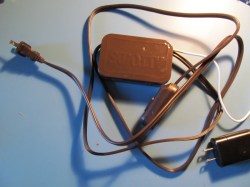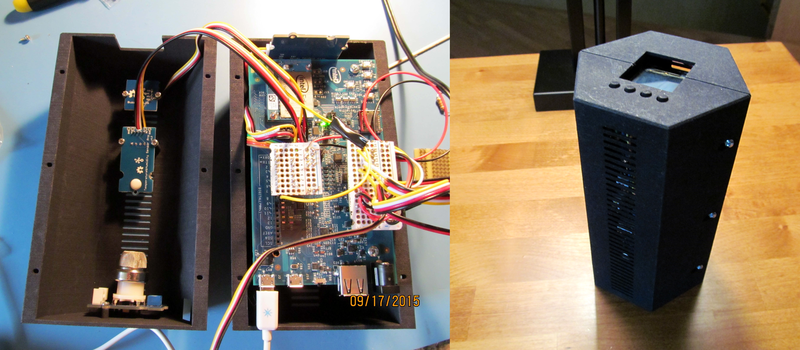[Tyler S.] has built a home automation and monitoring system dubbed ED-E, or Eddie. The name is an amalgam of its two main components, the Edison board from Intel, and some ESP8266 modules.
ED-E’s first job is to monitor the house for extraordinary situations. It does this with a small suite of sensors. It can detect flame, sound, gas, air quality, temperature, and humidity. With this array, it’s probably possible to capture every critical failure a house could experience, from burglars to water pipe leaks. It uploads all this data to Intel’s Analytics Cloud where we assume something magical happens to it.
ED-E can also sense the state of other things in the house, such as doors, with remote sensors. The door monitors, for example, are an ESP8266 and a momentary switch in a plastic case with a lithium ion battery. We’re not sure how long they’ll run, but presumably the Analytic Cloud will let us know if the battery is low via the aforementioned magic.
 Lastly, ED-E, can turn things in the house on and off. This is accomplished in 100% Hackaday-approved (if not UL-approved) style with a device that appears to be a lamp cable fed into a spray painted Altoids tin.
Lastly, ED-E, can turn things in the house on and off. This is accomplished in 100% Hackaday-approved (if not UL-approved) style with a device that appears to be a lamp cable fed into a spray painted Altoids tin.
ED-E wins some style points for its casing. It’s a very well executed hack, and we’d not previously considered just how many awful situations can be detected with off the shelf sensors.
















Can ED-E detect dead bodies gripping an Altoid tin fed by an ungrounded lamp cable?
After three days a Methane sensor may detect decomposition. The coat of paint may have a little dielectric property.
Love the ideas. Great start!
Edison is neat, BUT its to expensive. cheaper works much better
and THIS: “It uploads all this data to Intel’s Analytics Cloud where we assume something magical happens to it.”
IoT, as imagined by manufacturers, is an Orwellian dystopia.
intel ‘maker’ boards are simply too expensive and not well supported (at least by the community). I’ve never known anyone (of my maker circle) to actually build with intel maker boards or intel chips; and those that have the intel boards were given them or had to buy them for school. no one I know of chooses to spend money on intel maker products.
while they might be well designed (in some ways); they simply are not really maker products! unless just USING a fancy could-never-make-a-board-like-that-at-home board counts for making; but to me, its no more ‘making’ than taking a mini-itx board and slapping it into a case. all the work was in the board and you simply didn’t build that, you bought it.
tl;dr; intel does not understand ‘maker’ and still fails to get it. they should stick with their main pentium style chips for pc’s and give up on the maker stuff. they simply are too big of a company with too much (bad) history to make any inroads to the maker community.
and like some posters have said, what good does it do to design open source projects for boards that are too expensive and rare for the community to really be able to buy and use?
I can take an atmel 328 skinnydip chip, add a 50cent resonator and I have a working arduino; and I could ‘build’ this at 3am under stress and pressure, if need be, and have it ready by the AM for a demo. intel completely fails to get any part of that concept set.
I’m not sure even Hackaday should approve using a metal mints tin as the case on an ungrounded mains voltage device. +0 for creativity (it’s been done so many times before) -100 for basic safety. As a community we celebrate innovation, social consciousness, and repeatability, I wouldn’t want other readers repeating this mistake. The rest of his project looks great though, no matter what the Intel Edison naysayers will say (and I get their points), it’s a lot of fun work.
Yeah, this looks a little scary. If the instructables article had recommended a three-prong extension cord and provided instructions for securely connecting the cord’s ground to the altoids case, do you think that would suffice from a safety perspective?
if you have to be told how to ground something properly, you probably shouldn’t be poking around mains anyway.
here’s hoping he wrapped the connections in duct tape.
ED-E? Did no one get the Fallout: New Vegas reference?